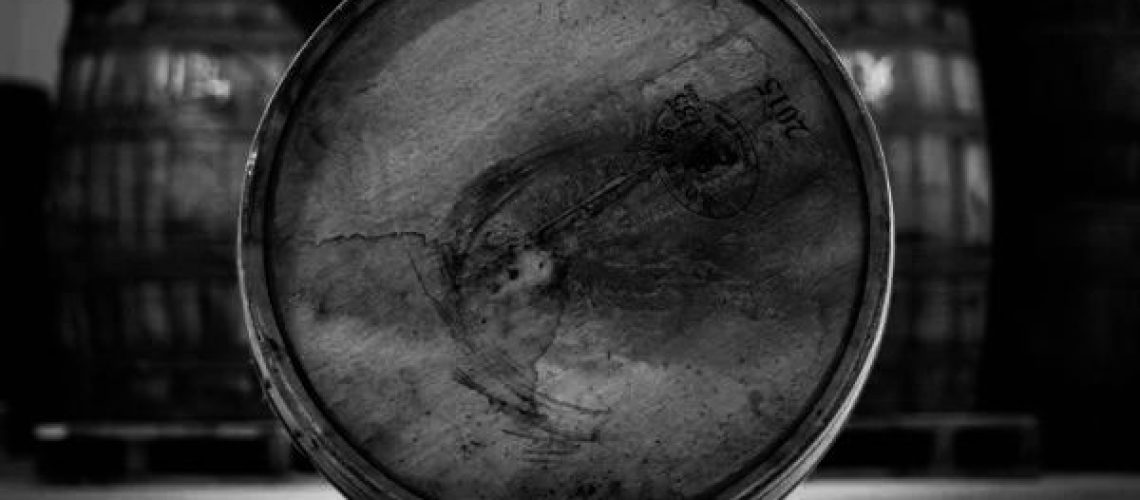There is a lively debate among connoisseurs about the merits of drinking first cask vs. second cask single malt whiskies, in terms of their quality, strength, taste and flavour. There are some myths for sure, but there’s also solid scientific evidence – backed up by the actual taste – that there are significant differences in certain types of casks and how first, second and third fill whiskies will taste. Different factors influence the maturation process, which is why whisky from different distilleries taste distinctly different.
One point to note is that when we discuss whiskies from 1st, 2nd or 3rd fill casks, we are not counting the initial ageing that takes place when bourbon or sherry are aged in brand new oak casks. We will discuss what happens to bourbon and sherry as they age in new casks (let’s call it “new fill casks”), but we are going to focus on how newly distilled single malt whisky ages in either bourbon or sherry casks. In other words, our whisky journey starts when the casks are 2-3 years of age and ready to be used at a single malt whisky distillery.
The “Shelf Life” of Casks Begins with the New Fill Casks
How long casks stay usable is correlated with the type of cask used to brew single malt whisky. The new cask in which bourbon or sherry is brewed for two or three years is always made of oak wood cut from trees between 70 to 200 years in age – either American White Oaks, which grow and can be harvested much faster or European Oaks, which are pricier due to lower supply. Other woods can’t be used productively. Softwoods have too much resin, which prevents the cask from “breathing” – which is a vital part of the maturation process. Other woods usually impart unmistakably unpleasant flavours to whisky.
Preparing the New Casks
Before a new cask is used, the “dead” wood must be brought to life through a “toasting” process. The wood is heated to 2000C for 30 minutes. This breaks up the basic structure as cellulose is split into caramelizes and wood sugar. Also, the Lignin (the complex polymer in the cell walls that creates the rigidity in the wood) is converted into Vanillin – the primary content of the extract of the vanilla bean. The cask is now alive.
Charrel Barrel
The treatment of bourbon and wine (sherry or port) casks vary from this point. Toasted wine casks are typically deemed ready for use after being bent into a barrel shape. Bourbon casks go through one more step. The new cask will be charred for 3 to 5 minutes, then doused in water, before it is ready for use. The charcoal layer can be seen if you cut through bourbon cask wood.
There is a red ring layer between the charcoal layer on the inside and the original (now toasted) wood on the outside. This serves an important purpose since charcoal helps to further filter the alcohol and remove tanginess from the whisky in the cask.
Besides the type of wood and the toasting/charring processes, the size of the barrel is also important. Smaller cask sizes will yield more interface surface area where the whisky and wood come in contact, and interact, with each other, hence more flavour seeps in. The two standard sizes manufactured are the American Standard Barrel (ASB), which holds 200 litres – which are used to make Scottish hogsheads that hold approximately 250 litres. European Oak casks are usually larger, 500-650 litres each and used for maturing sherry and port. These casks, called “sherry butts” or “port pipes” in Scotland, are now being made of American Oak as well.
What Happens Through the First 2-3 Years?
One of the reasons that bourbon is rarely preserved beyond 2-5 years is simple – the young oak wood imparts significant flavour to the whisky, which would create all kinds of problems with taste if the alcohol is left in too long. There is an optimal point – alcohol coming out of stills has an unpleasant, tangy, metallic taste which abates with every passing year that it spends in the cask. This process is called Subtractive Maturation, where the whisky loses bad taste as it matures. But, if it stays for more than 5 to 7 years in what started as a new cask, the worm turns as the whisky will pick up flavours from the cask that could prove too strong, killing the distillery character of the spirit.
Shelf Life Based on Use
Now to the wood. The average sherry is 17.5% alcohol by volume (ABV) while the average bourbon can be up to 62.5% ABV. A higher ABV means that the spirit is more “active” in the flask while ageing. This means that sherry keeps the flavour resident in the wood intact to a greater extent than bourbon which has occupied the cask for an equal length of time.
This is why bourbon aged casks are considered to have a lower shelf life than sherry aged casks.
Bourbon Barrels
Re-using Casks for Ageing Scotch Whisky
Once the “aged” casks arrive, their insides are scraped out and charred once again, reactivating the inside wood – a process sometimes referred to as rejuvenation of the cask. A rejuvenated sherry cask will now last easily for 40-45 years in terms of being usable for ageing single malt whisky, while a bourbon cask will last for a shorter time as explained below. Since casks are expensive, it is becoming a common practice for casks to be rejuvenated more than once over the first decade or two of its life. And the cost isn’t the only consideration – a rejuvenated cask yields better-flavoured whisky.
The Second Phase – Additive Maturation
When the “aged” cask is filled with 1st Fill Scotch whisky, the flavours from the cask begin to seep in. There is a general woodsy tone, but the overtones are vanilla (remember the Vanillin that had been activated by “toasting”), caramel (toffee) and oak. How much flavour is added depends on whether it’s a 1st, 2nd or 3rd fill cask. The younger the cask is, the more the flavour. So, a 1st Fill bourbon cask would tend to produce Scotch whisky with more vanilla, caramel and oak flavour.
Side Note: Difference Between Flavours from Ageing in Bourbon vs. Sherry Casks
At this point, it would be appropriate to note that ageing in bourbon casks will produce a more pronounced vanilla flavour in Scotch, while sherry casks impart more sweetness with a range of fruit cake and raisin-like dried fruit notes.
How the Flavor in a Cask Drops Off From 1st to 2nd to 3rd Fill
For a bourbon cask, the 2nd Fill cask would experience roughly 25-30% of the influence that the barrel had been able to impart during its 1st fill. By the time the cask is reused for a 3rd fill, the influence has dropped down to 10%.
Since a sherry cask will come in with more “life” than a bourbon cask, for the reasons explained previously, the picture is slightly better – which also means that a sherry cask can be used longer, typically through a 4th fill. For sherry, the 2nd Fill cask would experience roughly 50% of the influence that the barrel had been able to impart during its 1st fill. The influence drops down to 15-20% for a 3rd fill. You can get a 4th fill run out of the cask, though the influence has dropped down to 10%.
Scotch Whisky Barrels Maturing
Continuing Over the Years – Interactive Maturation
As the Scotch continues to age in the wooden cask, a second, more interactive, process begins. The whisky has its own distinct flavours coming out of a specific distillery, based on a number of factors that Master Brewers perfect – mainly special distillation techniques and the malt used – in order to distinguish their brand. Over time, it’s not only the cask that imparts flavour to the whisky, but the distillery character blends in with the wood flavours and the two in a certain sense either compete or blend together nicely. Since the only reduction to distillery character over the years is likely to be a decrease in the peat smoke flavour, it remains strong many years later while the wood flavour is in a certain sense “used up”. And this is where the difference between a 1st fill and a 2nd fill whisky may come in.
How Whisky Tastes Different Based on 1st or 2nd Fill, plus other factors
On whisky from a 1st fill European Oak cask, for example, the wood gains dominance over the distillery characters very quickly. This lends the aforementioned wood, vanilla and toffee flavour (with fruity notes if a sherry cask is being used) to Scotch that’s produced out of them. European Oak casks are practically unbearable as 1st fill casks for whisky that has arrived straight from the distillery – Glenlivet is one of the few distilleries that may use such casks for maturation.
There is a strong secondary effect running in the reverse direction. These casks are losing flavour too quickly, as explained above – and there’s a limit to how much they can be rejuvenated. Whisky from a 2nd fill cask will be dominated by distillery flavour, which means they will tend to be smokier in flavour. The second thing that happens with age is the cask breathes longer, which means it gets gradually oxidized. This oxidation effect typically results in the whisky becoming fruitier, more balanced and complex.
Perfect Harmony can be Achieved Through Finishing
One solution that Scotch manufacturers may resort to is “finishing” – the whisky is first aged in American Oak casks for 8 to 10 years till it “matures”, that is, loses its overly unpleasant tastes. They are then transferred to 1st fill European Oak casks for 1 to 2 years. The end product is a 10-12-year-old single malt Scotch whisky with the cask and distillery flavours perfectly blended. The slightly used European Oak cask can now be reused for a longer maturation cycle for a future batch of Scotch, having passed through some of its extreme flavour imposing phase. This too is a fine art. If you overuse the cask, it will get used up and be unable to impart meaningful flavour.
2nd Fill Can Be Used to a Distillery’s Advantage
While whisky aged in 1st fill casks, perhaps finished in European Oak casks, certainly retains significantly more of the distinctive flavours from the wood itself, many distillers use the ageing process in 2nd fill casks (and the weaker flavour imparted by the cask, plus the oxidization effect) to their advantage. Glenmorangie Original is an example, it is strong in fruit flavours which are reinforced when the whisky is being aged in 2nd fill casks – so the distillery has perfected the technique to create a distinctive taste that suits their fans.
The Verdict
If you are drinking Scotch whisky from your favourite distiller, you know two things: (a) they know what they are doing with their distillation and ageing process, and (b) you already love the taste, flavour and mouthfeel of the final product. So, don’t overthink whether your experience is being enhanced by using a 1st fill or 2nd fill cask matured product. But, if you are choosing a new Scotch to sample, some research may be warranted on the type of cask each of their brands are aged in. Depending on whether you like more vanilla, wood and caramel flavours, or more smoky and fruity flavours, you may want to choose a whisky that you think will be more enjoyable by relating whether the brand is produced from a 1st fill or a 2nd fill cask.


